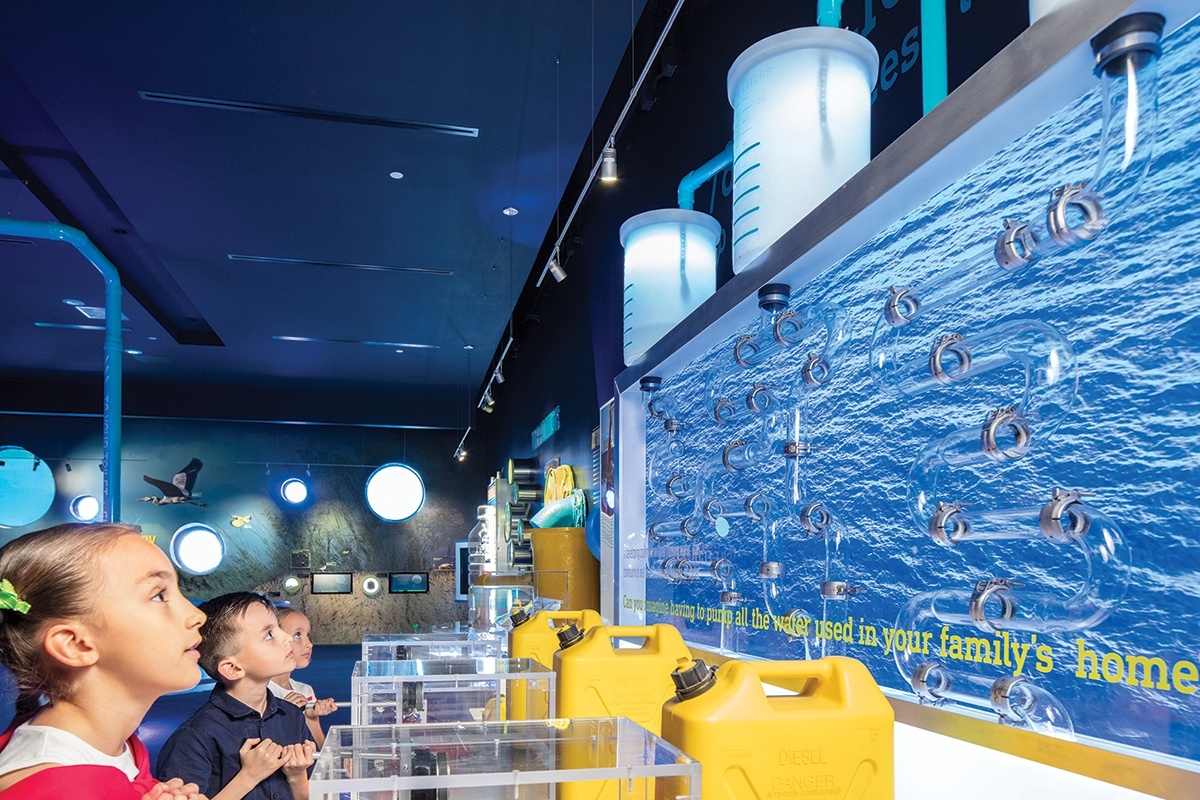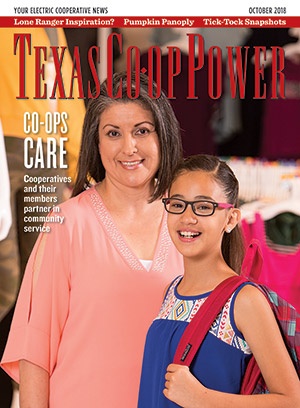Bathed in blue light, a toilet on a pedestal offers the first clue that the Laredo Water Museum takes a humorous approach to a serious topic.
“The Water Museum is about appreciating the importance of water and keeping the water supply safe,” says Wes Barbarena, plant operations supervisor of Laredo’s Jefferson Water Treatment Plant.
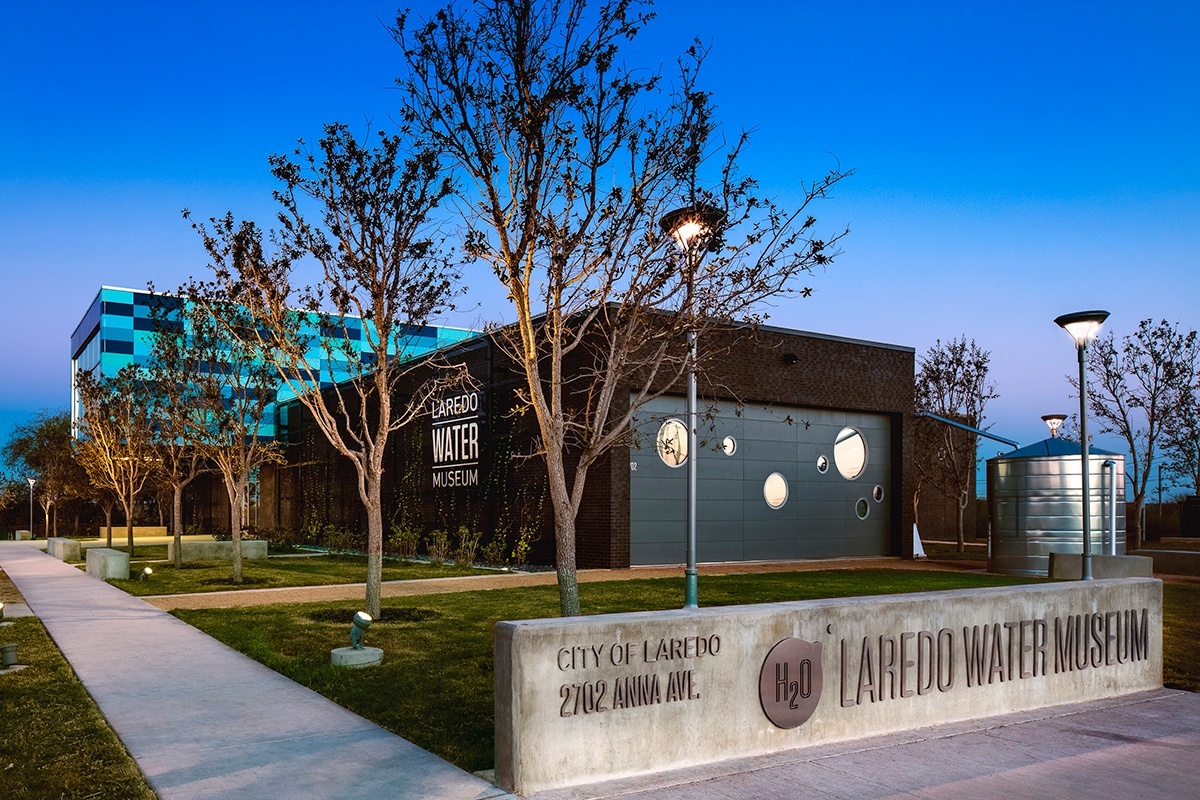
Web Extra: The Laredo Water Museum is on Anna Avenue.
Atelier Wong
Why does the museum display a toilet on a pedestal? Because one-third of water used in homes goes down the toilet. With exhibits such as that one, the city of Laredo’s Water Treatment Division hopes visitors will grasp the connection between water demand and the environment.
Visitors like me soak up information in arcadelike interactive exhibits, complete with blinking lights and joysticks. A hands-on immersion in water, so to speak, makes a difference, says Maria Romo, museum project specialist. “Teachers tell me they like that the kids learn while looking and playing. It helps them remember and make connections to lessons in class. Kids tell me they will come back with their brothers and sisters to have fun here and learn about water.”
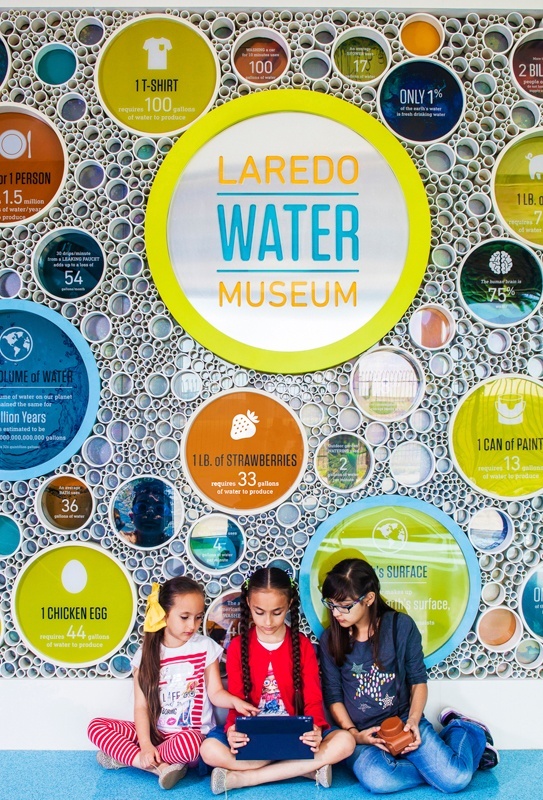
Web Extra: Children hang out at one of the displays at the Laredo Water Museum.
Atelier Wong
At the museum entrance, a wall of bubbles shows water use facts such as the number of gallons of water needed to produce a vehicle, a pair of jeans or a cup of coffee. A terrazzo map invites me to walk along a scale model of the 1,900-mile-long Rio Grande, allowing me a bird’s-eye view to explore its watersheds and tributaries.
Inside the 30-foot-long Water Treatment Tunnel (a simulated 72-inch diameter water pipe where dim blue lights create the illusion of a watery atmosphere), I travel with water on its journey from the muddy Rio Grande to clear potability. Motion-activated, action-packed videos on each side of me explain the six-stage process (disinfecting, clumping, agitating, purifying, filtering and underground storage). This process treats as many as 48 million gallons daily.
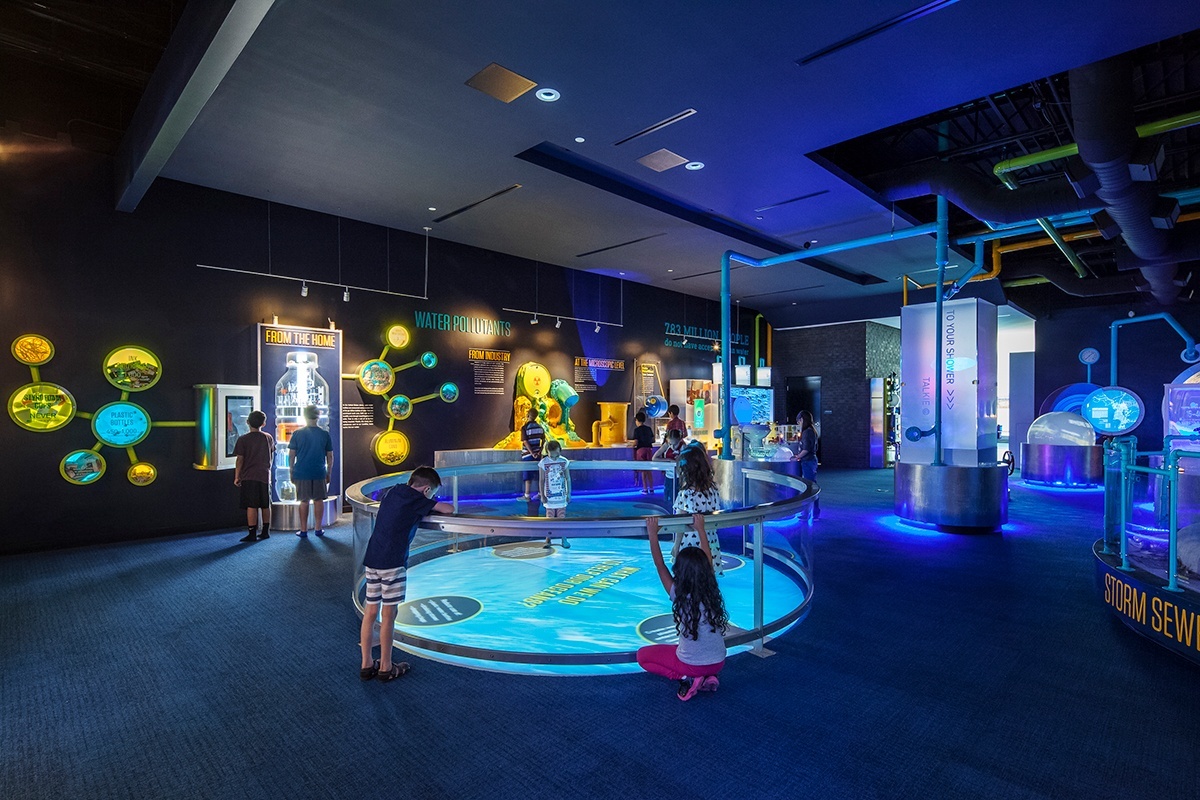
Web Extra: Laredo Water Museum
Atelier Wong
In the main exhibit hall, the Water World pool illustrates how currents move plastics and trash around the ocean. At Water and You, I step on a scale, and flashing lights show how many gallons of water I tote around daily. Humans are, after all, 60–75 percent water. One station challenges you to guess how much water you use at home for bathing and washing clothes and dishes. Other kiosks focus on agriculture, drought and wastewater.
And that blue toilet? The display recommends using low-flow or dual-use toilets along with a blue dye test kit to find if your toilet leaks. Conservation suggestions include low-controlled aerosol faucets that reduce water use up to 50 percent along with xeriscaping and rainwater harvesting.
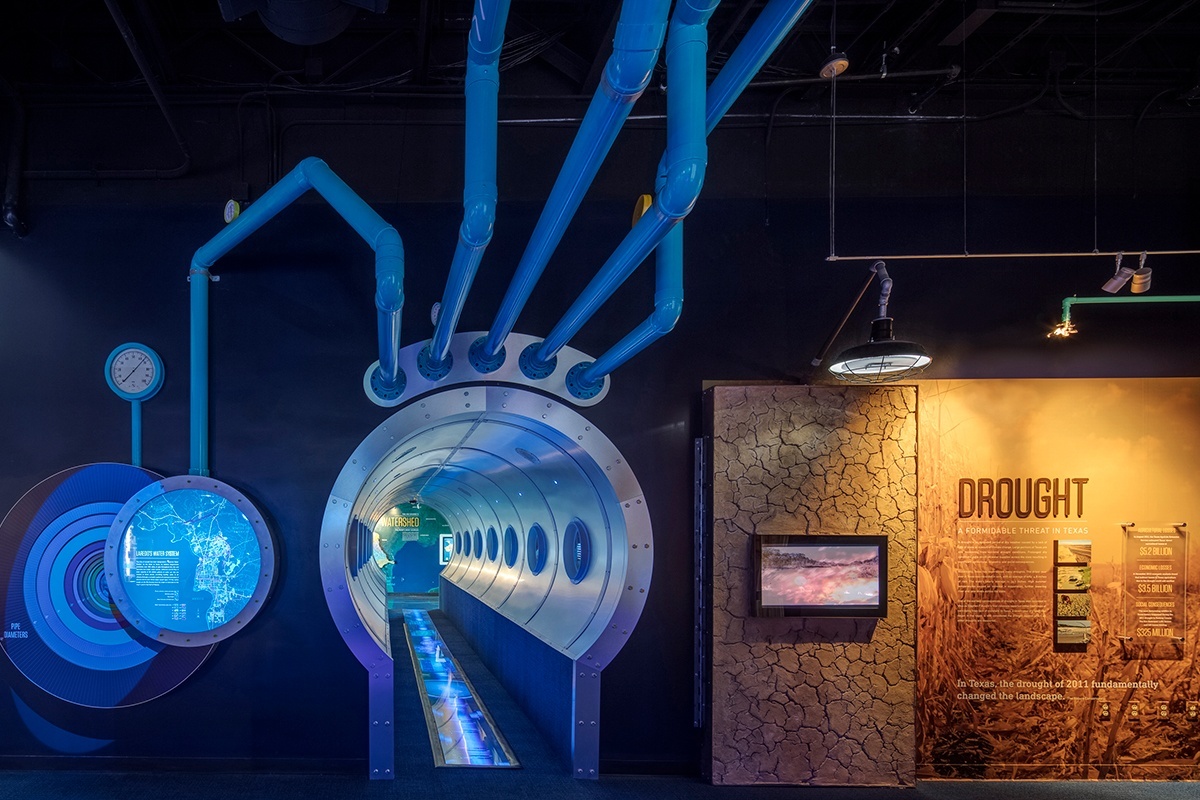
Web Extra: Laredo Water Museum
Atelier Wong
At a station labeled What You Can’t See in Water, a giant, simulated petri dish reveals squiggles, clumps and bubbles moving in water. I navigate the microscope-joystick through magnified parasites, bacteria and water contaminants.
Romo says students like to pump water by hand into a 5-gallon container, feeling the energy it takes. They can learn more about the almost 800 million people worldwide who do not have access to clean water and sometimes risk waterborne illnesses like cholera, typhoid and amoebic dysentery. “Kids see the impact of polluting on the river, the environment, and want to stop it,” she adds.
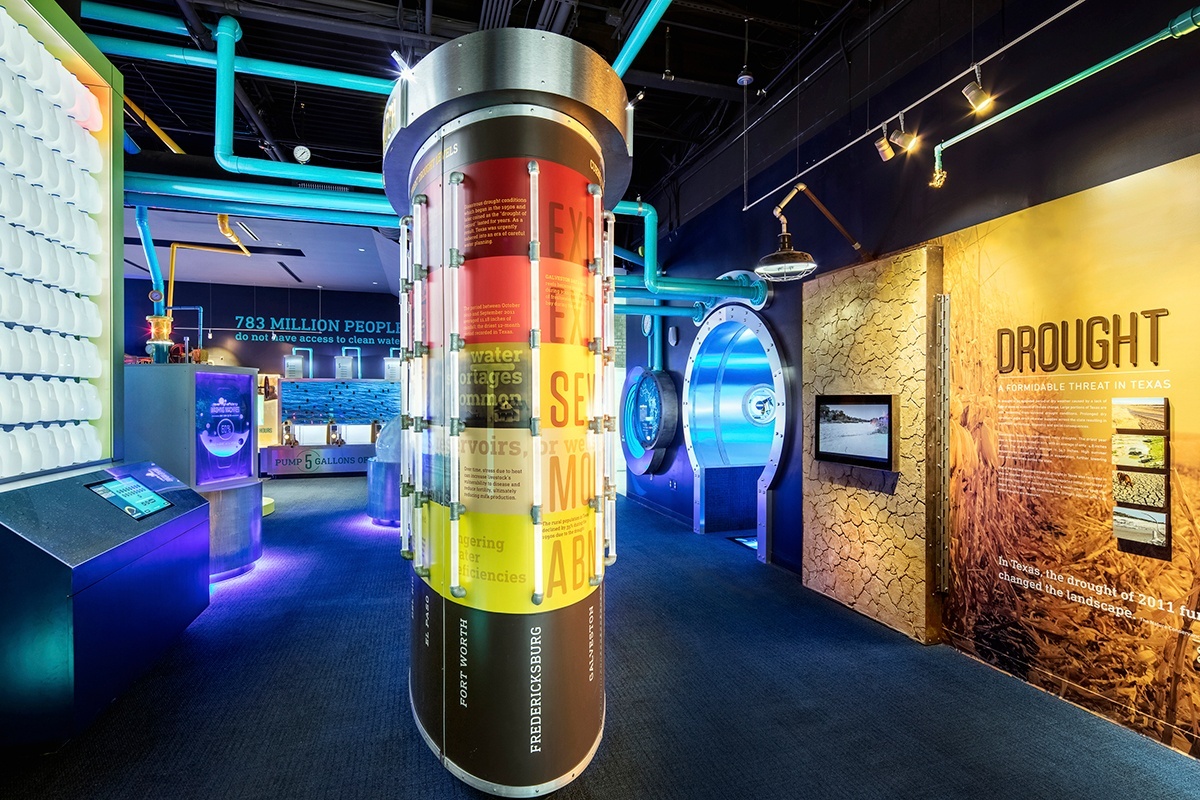
Web Extra: Laredo Water Museum
Atelier Wong
Outside, a nature trail edged with Turk’s cap, cenizo, yucca, skeleton-leaf goldeneye and tropical sage slopes down to the Rio Grande. The lush and colorful native plants require minimal water and attract green jays, scissortail flycatchers and countless butterflies.
The multisensory message is easy to absorb: Take good care of our water.
Eileen Mattei, a Nueces EC member, is a Texas master naturalist in Harlingen.
